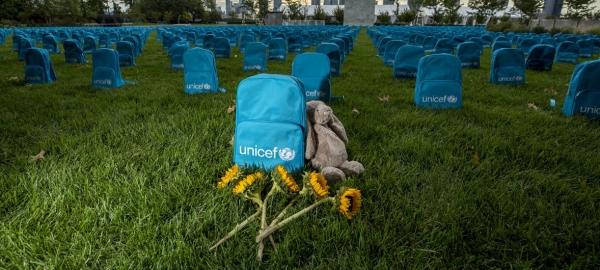1) Expelled from university for being Rohingya
“I was hiding my identity only so I could study. I feel guilty but I did not have an option […]”. These are the words of Rahima Akter, a 20-year-old student from Kutupalong refugee camp who, like many others, wanted to pursue an education but wasn’t allowed to, as state officials found out she was Rohingya.
Akter was born and raised in Bangladesh, after her parents fled Myanmar in 1992, during the mass exodus of Rohingya refugees. “Being a Rohingya is not my fault” Akter says. “I just wanted to study human rights, so I could raise my voice on behalf of persecuted community I belong to. […] Is getting an education a crime?”.
The problem is that Bangladesh does not allow Rohingya to enroll in schools or colleges. And this is because the vast majority of Rohingya children - including those born in Bangladesh into unregistered families, as well as those who arrived in the country since a military campaign of ethnic cleansing was begun in August 2017 - are not formally recognized as refugees and face restrictions on access to education. According to a Report published by Human Rights Watch (HRW), as from January 2019, Bangladeshi authorities began to track down and expel Rohingya refugee students, making a distinction between those Rohingya refugees who are "registered" and the ones who arrived since August 2017 and are referred to as "forcibly displaced Myanmar nationals".
Education is a basic human right and it should be for all. As rightly commented by Bill Vans Esveld, Associate Director of children’s rights at HRW, "It is a huge mistake to hold Rohingya children's education hostage to politics. Doing so also amounts to human rights abuse."
To know more, please read:
https://www.hrw.org/news/2019/04/01/bangladesh-rohingya-refugee-students-expelled
2) The dual status of Child soldiers
Since the first Judgment delivered by the International Criminal Court against Thomas Lubanga Dyilo, the theme of child soldiers has drawn the attention of many professionals and academics working in the field of international criminal, humanitarian and human rights law. As rightly observed by Giulio Bartolini and Marco Pertile, “the legal and ethical interest for this topic undoubtedly derives from the paradox that the situation of children involved in conflicts can generate”. Are they victims manipulated by adults, or are they criminals, responsible of the most heinous international crimes?
The attention to the topic has even increased over the years, and this is due to the asymmetric features that revolve around modern armed conflicts, where parties are often represented by armed groups and where these groups are often qualified as “terrorists”. From this occurrence, new legal issues clearly emerge, in particular with regard to the increased involvement (by recruitment or birth) of children with such terrorist groups. Concerns mostly relate to the arguable practice of depriving women and children of their liberty because of their alleged connection with terrorist fighters. According to the International Committee of the Red Cross (ICRC), as children enjoy general and special protection under international humanitarian law, in these contexts they are first and foremost victims and must be detained only as a last resort.
In light of these emerging questions, and with the aim of exploring how international law responds to the fate of child soldiers, scholars from different countries and experiences have been asked to review and discuss this topic from a reflective, fresh and empirical perspective. Their common conclusion is that, despite significant media and policy attention, child soldiers remain poorly understood and inadequately protected.
To know more, please read:
3) Backpacks as a Symbol of Hope
In ongoing conflicts in Afghanistan, the Central African Republic, Somalia, South Sudan, Syria, Yemen and many more, the heaviest price of war is paid by children. According to the 2019 Annual Report of the Secretary-General on children and armed conflict, more than 12,000 children were killed or harmed in conflict zones last year, the highest number since the UN started monitoring and reporting this grave violation.
As illustrated by UNICEF, the vast majority of child casualties in armed conflict are caused by the continued and widespread use of explosive weapons, such as airstrikes, landmines and cluster munitions, which - as most of our readers already know - infringe the fundamental principle of distinction between civilians and combatants.
Starting from this assessment, and on the eve of the return of children to school after the usual summer break, UNICEF has decided to launch a clear message to the world, by displaying backpacks as a haunting symbol to call for greater protection of children living in conflict.
To know more, please read:




